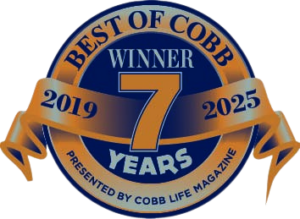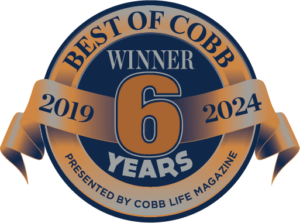
The Cost of A Senior Living Community vs. Staying at Home
The True Cost of Staying at Home vs. Moving to a Senior Living Community
When considering the next chapter of retirement, many older adults instinctively believe that staying in their own home is the most cost-effective choice. After all, the mortgage may be paid off, and it seems familiar and comfortable. But when you dig a little deeper, the picture becomes more complex. From ongoing home maintenance to rising utility costs and the hidden price of social isolation, the financial and emotional toll of aging in place can quickly add up.
In contrast, a senior living community offers a vibrant, maintenance-free lifestyle filled with amenities, social connection, and peace of mind all under one predictable monthly cost. In this article, we’ll break down the true costs of staying at home versus moving to a senior living community and help you better understand the value and investment each option entails.
The Assumption: Staying at Home Saves Money
It’s a common belief: “I own my home, so it must be cheaper to stay here.” And while this may seem true on the surface, many people overlook the full range of expenses tied to homeownership and aging at home in retirement.
Let’s look at some of the key cost categories:
1. Home Maintenance & Repairs
Even with no mortgage, homes require regular upkeep. From lawn care and cleaning to HVAC servicing, roof repair, plumbing issues, or unexpected emergencies, maintenance costs can quickly run into the thousands each year.
According to a new report by Thumbtack, the average cost to maintain a single-family home is $10,433, and older homes may need even more attention. Plus, as we age, we won’t be able to maintain a home quite like we used to, which means hiring others to do it for us.
2. Utilities and Property Taxes
Electricity, gas, water, internet, and property taxes don’t go away in retirement. In fact, older adults often see utility bills rise as they spend more time at home. And depending on location, property taxes can be a significant yearly burden.
3. In-Home Services & Modifications
As aging progresses, many individuals require home modifications (such as stair lifts, grab bars, or walk-in tubs) and may need to hire help for housekeeping, personal care, or transportation. These services add up quickly and often go unplanned.
4. Groceries and Dining
Grocery shopping, cooking, and cleaning can be a hassle for older adults, especially those living alone. Ordering takeout or dining out more frequently may become the norm—another cost that adds up month after month.
5. Social and Entertainment Costs
Staying socially active is crucial for overall wellness, but finding and attending activities or events outside the home may require transportation, coordination, and expenses for memberships, classes, or tickets. Social isolation can also come at a mental and physical health cost, which is harder to quantify but very real.
The True Value of a Senior Living Community
Now let’s turn to what a senior living community offers, not just in terms of costs, but also in value.
Senior living communities are designed to support an active, engaging, and carefree lifestyle. Here’s what’s typically included in the monthly cost:
1. Maintenance-Free Living
Say goodbye to home repairs, lawn mowing, and unexpected contractor bills. Everything from landscaping to appliance repairs is covered.
2. All-Inclusive Amenities
Communities often include access to wellness centers, walking trails, fitness classes, heated pools, libraries, theaters, and salons without added membership or entry fees. These aren’t just free extras—they support better health and quality of life.
3. Chef-Prepared Meals
No more grocery lists or dishes. Enjoy delicious, nutritious meals every day without the hassle or added cost of dining out. Most communities offer flexible dining options to suit personal preferences. It is your choice whether to cook at home or enjoy a chef-prepared meal! Transportation to get groceries is included, as well.
4. Health and Wellness Support
With on-site wellness staff, fitness programs, and preventive care initiatives, senior living communities are built to promote long-term health and independence. Most communities include a continuum of care to take care of your health needs as they change.
5. Engaging Social Life
With daily activities, interest groups, cultural outings, and communal spaces, residents have constant opportunities for connection and lifelong learning. It’s easy to stay active and build meaningful friendships and a sense of community and belonging.
6. Predictable Monthly Costs
Unlike the fluctuating costs of staying at home, senior living communities offer predictable monthly rates that cover most (if not all) of your living expenses. This simplifies budgeting and helps reduce financial stress and planning.
A Side-by-Side Look: Staying at Home vs. Moving to a Senior Living Community
Let’s compare common expenses:
➡️ Download this free Cost Comparison Worksheet to break down your own expenses and see how they measure up.
An Investment in Lifestyle and Wellbeing
When comparing the two options, the numbers tell only part of the story. A senior living community is not just a financial decision—it’s a lifestyle choice. It’s about comfort, freedom, peace of mind, and enjoying your retirement years without the burdens of home upkeep. Living in a senior living community combats social isolation, engages minds and bodies, and leads to a more fulfilling life!
In fact, many families are surprised to learn that senior living can be comparable in cost, or even more affordable, than staying at home once all factors are considered.
More importantly, senior living communities are designed to help residents age in place with dignity, purpose, and support. It’s an investment in better, healthier living.
Making the Right Decision for You
If you’re starting to explore your options, consider the following questions:
- Are you currently spending time or money managing home maintenance?
- Are you eating well, exercising your mind and body, and staying socially active?
- Do you feel safe and supported in your current home?
- Is your current living situation sustainable for the long term?
If you’re unsure how your expenses compare, our Cost Comparison Worksheet is a great first step toward understanding your options.
At Sterling Estates, we’re here to help you make informed, confident choices about your future. Our communities are built on a foundation of independence, wellness, and hospitality, offering everything you need to thrive.
Schedule a tour today and see for yourself the value of senior living.


